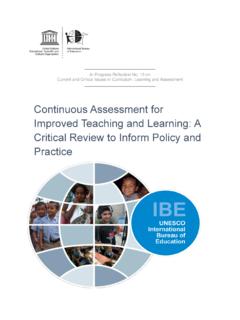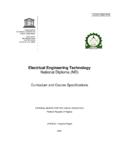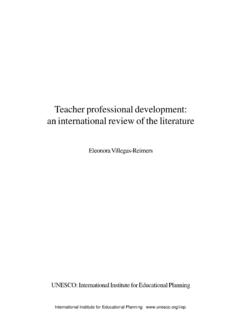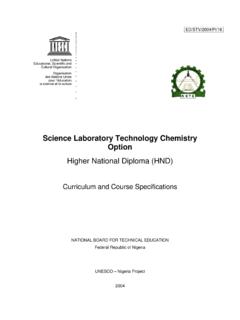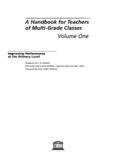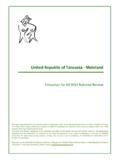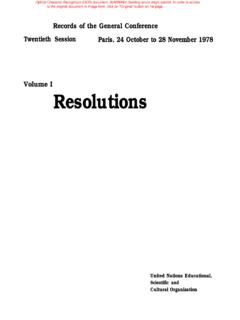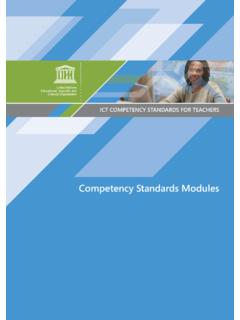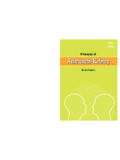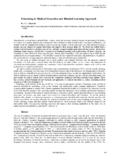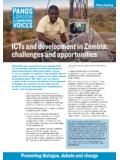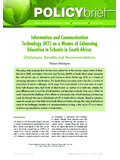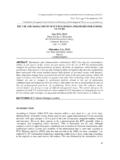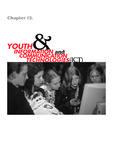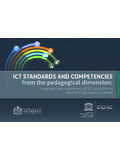Transcription of INFORMATION AND COMMUNICATION …
1 UNESCO, 2005 How ICT Can Create New,Open learning EnvironmentsINFORMATION AND COMMUNICATIONTECHNOLOGIES IN SCHOOLSA HANDBOOK FOR TEACHERSorCo-ordinator: Mariana Patru, UNESCOA uthor:Alexey Semenov, Moscow Institute of Open Education,Russian FederationOther Contributors:Leonid Pereverzev, Institute of New technologies , Russian FederationElena Bulin-Sokolova, Centre of INFORMATION technologies andLearning Environments, Russian Federation (Chapters 3, 4, 5 and 7)Editor:Jonathan Anderson, Flinders University, AustraliaReviewers:Evgueni Khvilon, Consultant, UNESCOB oris Berenfeld, The Concord Consortium, USAC over design: Bertrand Ambry, UNESCOC over photo credit: Tatyana Khvilon, Institute of New technologies , Russian FederationPicture design: Anna Roschina, Institute of New technologies , Russian FederationFor further INFORMATION , please contact:Mariana PatruDivision of Higher EducationUNESCO7, place de Fontenoy75352 Paris 07 SP, :33-1-45 68 08 07 Fax.
2 33-1-45 68 56 authors are responsible for the choice and presentation of facts contained in this publication andfor the opinions expressed therein, which are not necessarily those of UNESCO and do not committhe Organization. The designations employed and the presentation of the material throughout thispublication do not imply the expression of any opinion whatsoever on the part of UNESCO con-cerning the legal status of any country, territory, city or area or of its authorities, or concerning thedelimitation of its frontiers or of Higher Education UNESCO 2005 Printed in France2ED/HED/TED/2 FOREWORDAll governments present at the World Education Forum in Dakar, Senegal,April 2000.
3 Pledged to achieve a number of essential goals aimed at ensuringEducation for All (EFA). I will mention only two of them that are particularlyrelevant for, and lie at the basis of, the development of this new publication -ensuring that the learning needs of all young people and adults are met through equi-table access to appropriate learning and life-skills programmes(Goal 3) and improvingall aspects of the quality of education [..] so that recognized and measurable learningoutcomes are achieved by all(Goal 6).
4 This new publication, initiated by the Division of Higher Education,entitled ICT in Schools: A Handbook for Teachers or How ICT Can Create New,Open learning Environments , should be seen as complementary to the onesalready published by the Division in the 2002-2003 biennium devoted to theuse of INFORMATION and COMMUNICATION technologies (ICT) in teacher educa-tion. The present handbook is principally designed for teachers and teachereducators who are currently working with, or would like to know more about,ICT in major theme in the book concerns how ICT can create new, open learn-ing environments and their instrumental role in shifting the emphasis from ateacher-centred to a learner-centred environment; where teachers move frombeing the key source of INFORMATION and transmitter of knowledge to becoming acollaborator and co-learner.
5 And where the role of students changes from one ofpassively receiving INFORMATION to being actively involved in their own over the past years has clearly indicated that efforts to ensureequal access to educational opportunities and quality education for all must beaccompanied by wide-ranging education reforms. Such reforms are not likely tosucceed without addressing the new roles played by teachers in preparing stu-dents for an emerging knowledge-based and technology-driven must have access to adequate training and ongoing professional devel-opment and support and be motivated to use new teaching and learning meth-ods and IN SCHOOLSI nformation and COMMUNICATION technologies must be harnessed to supportEFA goals at an affordable cost.
6 They have great potential for knowledge dis-semination, effective learning and the development of more efficient educationservices. This potential will not be realized unless these technologies serve ratherthan drive the implementation of education strategies. To be effective, especial-ly in developing countries, ICT should be combined with more traditional tech-nologies such as books and radios and be more extensively applied to the train-ing of must reflect the diversity of needs, expectations, interests andcultural contexts.
7 This poses particular challenges under conditions of globaliza-tion given its strong tendency towards uniformity. The challenge is to define thebest use of ICT for improving the quality of teaching and learning , sharingknowledge and INFORMATION , introducing a higher degree of flexibility inresponse to societal needs, lowering the cost of education and improving inter-nal and external efficiencies of the education sincerely hope that this new publication will be both informative and use-ful for a wide range of users who all believe in, and pursue.
8 A common goal -Quality Education for HANDBOOK FOR TEACHERSJohn DanielAssistant Director-General for EducationCONTENTSFOREWORD.. 3 CONTENTS .. 5 PREFACE .. 91. SOCIETY, learning IMPERATIVES, AND ICT .. 13 Societal Perspectives .. 13 The shock of the future .. 13 Mindcraft economy .. 15 Globalization and ICT .. 15 Technology a double-edged sword.. 16 Individual needs and expectations of society.. 17 Radical changes needed in school .. 18 Educational Trends .. 19 Ancient legacy and modern trends .. 19 Liberal and vocational education.
9 22 Continuous educational development.. 24 Global awareness and cooperation .. 26 INFORMATION Processing as Core Activity in Schools .. 27 technologies and tools .. 28 Educational technology of mind.. 28 learning as INFORMATION processing .. 292. ICT: NEW TOOLS FOR EDUCATION .. 31 Metaphors for Comprehending ICT .. 31 INFORMATION Basics.. 33 INFORMATION objects .. 33 INFORMATION space.. 33 Digital transformation .. 34 Words for big numbers .. 34 Storing INFORMATION , memory and compression .. 35 Transmitting INFORMATION .
10 35 Hardware Components of ICT .. 37 Computers .. 38 Peripherals .. 4156 ICT IN SCHOOLSS torage .. 42 Human movement as input .. 44 Visual input .. 47 Aural input .. 49 Sensors for input .. 50 Output .. 51 Communications .. 56 Digital INFORMATION Resources .. 60 INFORMATION objects and their screen presentations .. 60 One-dimensional editing .. 61 Two-dimensional editing .. 63 Three- and four-dimensional editing .. 64 Multimedia presentations .. 65 Human-computer interaction and COMMUNICATION .. 65 Software tools.. 72 Major Trends in ICT.
